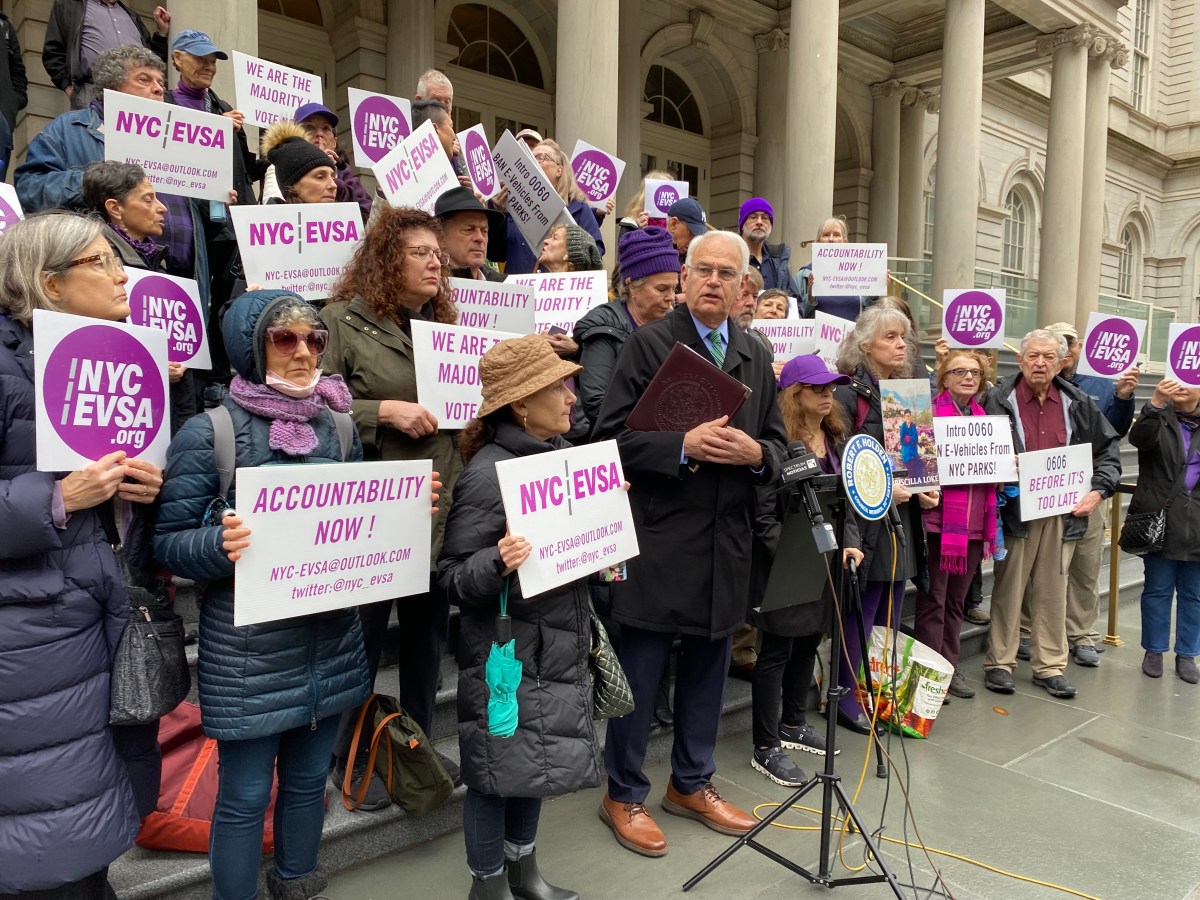POLITICAL NEWS Analysis
(AP) The best product of New York’s $132.5 billion budget adopted last week may have been the process.
By all accounts from inside the secretive negotiations, Gov. Andrew Cuomo reached out to the Legislature although a New York governor’s immense legal power in budgeting meant he didn’t have to. Assembly Speaker Sheldon Silver and Senate Majority Leader Dean Skelos reached back, even though apparently no longer feeling the threat of Cuomo’s veto of their redistricting plan was gone. The bills were even made public for three days before the voting which ended last Friday, Mar. 30. Even though that’s the law, it’s a rare nod to transparency.
The trio also affirmed two major procedures for future budgets: A law to tie the increase in school aid-always the most contentious issue-to a formula based on inflation, and a budget growth cap of two percent, the same limit they placed on local government and school budgets last year.
Rather than the rancor that has marked decades of budget talks, a senior Cuomo administration official called the negotiations collegial over “a unified agenda.”
“There are compromises all through this budget,” the official said.
A senior official in the Assembly’s Democratic majority said negotiations were unusually cooperative, with listening as important as talking.
That is a rarity on Albany’s budget stage where, for decades, New York’s most intense power politics played out and progress was marked by the number of “blowups.”
Both officials spoke on the condition of anonymity because some things didn’t change; details of closed-door negotiations are still sacrosanct.
“Everybody listened to each other and figured out a way to compromise the differences,” said Skelos, the lone Republican in the closed-door talks. Blowups? “Absolutely none,” he said. In previous years? “Just about every conference.”
Not everyone is ready to celebrate this glimpse of what may be the start of a new Albany. Public Senate-Assembly conference committees hashed out elements of the budget and bills weren’t rushed to a vote, but the spending plan is still the product of notorious three-men-in-a-room negotiation.
“The praise of the process is absolutely superficial. Really a dogand pony show,” said Sen. Kevin Parker, a Brooklyn Democrat. “I’ll take dysfunctional if that means everyone is represented, and if this is what passes for functional.”
For example, the budget didn’t touch the loopholes for corporations that fund New York politics through campaign contributions. Instead, Cuomo met the outrage of the Occupy movement and other progressives by setting up a commission to make recommendations.
“When it comes to tax and fiscal policy, Wall Street has won again,” said Michael Kink of the Strong Economy for All Coalition, composed of labor and other groups.
The Republican minority of the Assembly focused on the gains, including the avoidance of “messages of necessity.” Intended for emergencies to suspend the three-day review for bills, they are often used to quickly vote on the most contentious deals before they can unravel.
“It’s the best process I’ve seen since I’ve been here,” said Assembly Minority Leader Brian Kolb, in his sixth two-year term.
“What they’ve proved is the means can be as good as the ends,” said Republican Assemblyman James Tedisco. “It didn’t fall apart.”
What held together were Cuomo’s top priorities including a massive New York Works job-creating program and just about every item in his budget proposal presented two months ago. The Legislature, however, amended nearly all and rejected some.
Silver got an increase in the welfare grant once rejected by Cuomo, reinstatement of early intervention procedures in pre-kindergarten for kids in need, an increase in community college aid, and the right of Medicaid patients to get prescriptions their physicians deem best even if they are more expensive brand-name drugs.
Skelos can claim a long-sought doubling of the DNA database for law enforcement, eliminating the Metropolitan Transportation Authority payroll tax for thousands of small businesses and schools, and keeping open the regional Department of Transportation offices slated to close.
The state’s EPIC health care program was expanded to a fill the “donut hole” in Medicare, averting a spike in co-pays for seniors. Silver and Deputy Majority Leader Thomas Libous secured $100 million for upstate road repair to keep pace with downstate on transportation, a critical issue to salve upstate-downstate tensions in the Legislature.
There’s still reason for skepticism: New Yorkers should watch to see if a new Albany continues to emerge after this legislative election year and when Cuomo does his third and fourth budgets, when governors traditionally go on spending sprees while running for re-election.
For now, though, from what can be gleaned from the limited public view and few dispatches from inside, this might be the tip of government truly functioning.


































